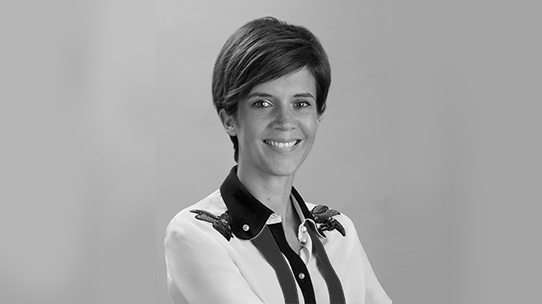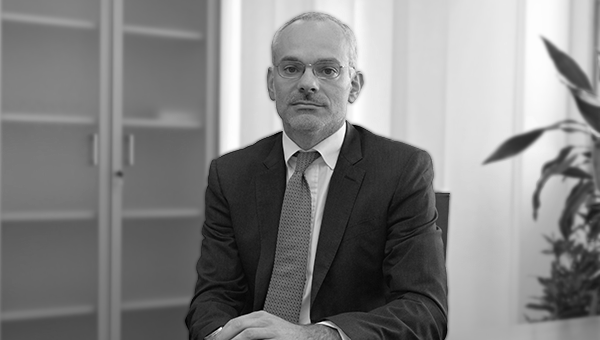Travel retail: where Luxury spreads its wings
Aeroporti di Roma (AdR) has developed a new retail strategy for its flagship airport at Fiumicino, providing infrastructure and operational support for its shopping areas. Gianluca Littarru, AdR’s General Manager, explains the changes and the central role being played by Luxury Retail in this new airport environment. The focus is on giving high-spending passengers the time and opportunity to do their shopping in a dedicated Luxury space.
How has travel retail evolved at AdR in the past three years?
We’ve been through a major change in strategy at Fiumicino, our main airport, in terms of the infrastructure for both aviation and retail, with the aim of improving the quality of the passenger experience. From an operational point of view, we are moving shopping facilities away from boarding areas and concentrating them in a single area – starting with the new building we opened for passengers flying to non-Schengen countries. It’s a mass pass-through area with a much greater focus on high spenders, which involved adapting the product mix and dramatically increasing the share of luxury goods.
How would you describe your approach to travel retail at Fiumicino?
We are aiming for a seamless integration between aviation operations and retail. Everything should happen quickly and smoothly when you enter the airport, so that there is time to shop – and people can find the brands they want. Of course, we also need a strong focus on the core retail categories, which represent about a third of our revenues. We also need a strong focus on food, which represents a key part of the customer journey in an airport like Rome – where passengers are looking for an Italian dining experience – even though food is not a major profitability driver. But we particularly need luxury retail, which is one of the key drivers of growth in the retail business – combining a brand narrative and experience with the significant price advantages of the Duty-Free area. As an indication, the spend per passenger for flights to China is five times that of other long-haul destinations.
What is your strategy for developing that Luxury Retail?
There are several aspects, starting with the infrastructure. We have created a shopping mall on two levels and, within that, an area for luxury. From the retailers’ viewpoint, it creates the right environment and the opportunity to position their brands. We don’t publish the boarding gates until 40 minutes to an hour and a half before departure, in order to maximize ‘dwell-time’ in the retail area. However, we have made sure it is also the most comfortable part of the airport for passengers, and that they have all the facilities they need. We also have multilingual hostesses to act as personal shoppers. Currently, these are Chinese speakers, to reflect our highest spenders, but we will soon be adding Korean speakers. We are also using digital advertising and social media to direct passengers toward Luxury Retail.
How does that technology work in practice?
Take the example of a flight to China at 8pm. The first passengers will arrive at 3.30pm, so we make sure that the check-in opens early – so they can go through passport control and spend more time air-side. Once they have checked in, we have digital assets – like billboard screens and TVs – to advertise the brands they will meet on the way to their gate. And because we have invested heavily in flow measuring and infrastructure, we can also target special offers to specific passengers who we know will be in a given area at a particular time.
How do you propose that offer to brands?
Our aim is not to sell advertising by minutes, but by the number of passengers in their target segment who will be exposed to a particular message. We can count people accurately through wifi triangulation and other technologies that do not involve facial recognition. We can also triangulate with other data, such as boarding pass scans or the location of check-in counters and boarding gates for specific flights. We strongly believe that the biggest potential for retail is in this integration of advertising with digital assets. We also have adverts on the splash page for our free wifi – which creates a lot of conversion – along with an app to drive promotions. We are also active on social media, such as WeChat in China.
How else do you support Luxury Retail?
Luxury brands are very strict about how they position and operate their stores, and we need to give them the ideal conditions for doing that. Our skill is in accommodating their very different requirements in terms of brand positioning and interaction with our infrastructure. For example, some brands do not want the point of sale to be on show. We also give brands analytical support, in terms of sales by product category, and we can help match their operations to daily/seasonal peaks in passenger traffic. In addition, we support them with new activities, such as the “Rome Airport Luxury Guide” – a new magazine for passengers that focuses on the key products of Luxury brands – and a communications campaign that underlines the full VAT saving (22%) compared to downtown stores. But we leave the ‘in-store experience’ to the retailer.
How do you see passenger numbers in the years ahead?
Generally, we are seeing very different growth rates in passenger numbers – with single digit for the Schengen area and double digit for non-Schengen, with the biggest connections being China and North America. Our next step will be to open a new commercial area for Schengen-zone flights in three years’ time. Over the next 15 years, we have the capacity to accommodate another 20 million passengers a year before a new terminal is needed.
Could travel retail become more profitable than handling flights?
That’s not such a strange idea, and it depends on the aviation tariffs! But every euro we earn from retail goes straight to the bottom line, so we have a huge incentive. Also, I believe that airports and travel will be one of the most resilient models of traditional retailing, compared to the disruption elsewhere, because the customers are here, they have time, and there is a strong entertainment and experience drive attached to the sales. There are also tax incentives, with duty-free. For the future, I think the direction is for an airport to be a perfectly-functioning shopping mall – where you can also safely board a plane.
Moving forward, what is your ultimate objective?
It is to maximize both passenger spend and perceived quality, within the constraints we have in terms of land and terminal space. To achieving that, we need to preserve the passenger experience, because ultimately it’s what we are judged on. If you provide too much retail, too few rest areas, and not enough food and beverage outlets, people will feel under pressure to buy, and comfort levels will be low. We also recognize that not every passenger wants to shop for luxury goods – and we cater for that. Our task is to maximize the opportunities for retail, which means being efficient in security and passport control. We want a win-win situation, with value for passengers and retailers, especially in the Luxury sector.




